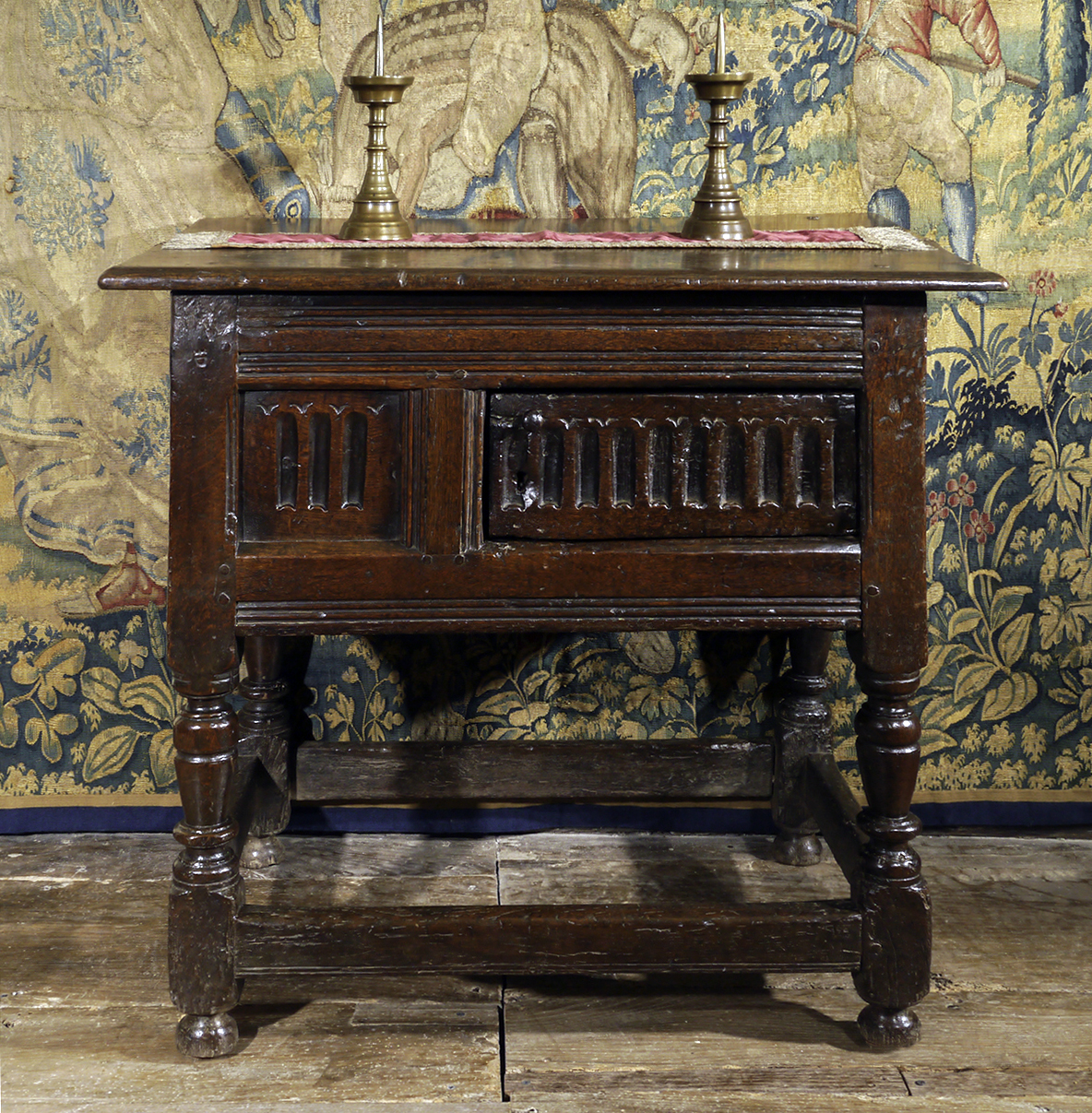Antiques Trade Talks – Tim Wilson of Wysdom Hall
 Antiques dealer and BADA member Tim Wilson is a specialist in early oak. He is the second generation family member to run his business at Wysdom Hall in Oxfordshire, taking over from his father in the early 1980s. We chat to Tim about his passion for antique furniture, ask buying advice, and find out his predictions for the antiques trade’s future.
Antiques dealer and BADA member Tim Wilson is a specialist in early oak. He is the second generation family member to run his business at Wysdom Hall in Oxfordshire, taking over from his father in the early 1980s. We chat to Tim about his passion for antique furniture, ask buying advice, and find out his predictions for the antiques trade’s future.
How many years have you been in the antiques business?
40
Why should people be interested in antiques?
There is something very pleasing about an object made at a time when speed was not of the essence, a time when proportion and quality of construction was important, an item which could, but won’t, tell a story, allowing your imagination to kick in. Most of us like looking at historic houses, mature gardens – these are only antiques on the grand scale.
 What areas/items are currently selling well?
What areas/items are currently selling well?
For us, very good 17th-century furniture and tapestries.
What do you think are the current ‘good investment’ items?
18th-century oak and mahogany of good colour and proportion, these represent wonderful value compared to modern styles or reproduction furniture and will eventually return to the values of the mid-80s.
Which are the ones to watch?
I think clocks will bounce back, they appeal to many – antique lovers, engineering enthusiasts, people who like mechanical objects.
What antiques do you have at home or collect and why?
 I have always collected early furniture, metalware, carvings; in fact the sort of things that would have been in everyday use in a 17th-century family house. From my mid-teens, I found an easy understanding of their construction and proportion, making it easy to spot “the naughty ones” – that is why I don’t collect porcelain or silver.
I have always collected early furniture, metalware, carvings; in fact the sort of things that would have been in everyday use in a 17th-century family house. From my mid-teens, I found an easy understanding of their construction and proportion, making it easy to spot “the naughty ones” – that is why I don’t collect porcelain or silver.
What do you think will be the antiques of the future?
Items showing individual design, made from tactile material, by a caring maker. I don’t think items of mass production will ever become seriously collected.
How is the industry changing and what will it look like in the future?
The industry has changed phenomenally over the past 40 years, the little old-fashioned antique shop found in every town has disappeared, even the larger, more established companies have gone, to be replaced by online business. But when this fashion wanes, customers will go back to antique shops, where they can stand in front of a piece and discuss it with the owner and hopefully see the item they like displayed with comparable pieces. In a shop, articles can be displayed in room settings, giving customers fresh ideas for their homes.
Tell us some trade secrets – what questions should buyers be asking?
The most important piece of information a buyer needs to know is how good an example is the piece they are looking at, be it a 17th-century chest or a 1970s Ford Capri.
What antiques/artworks would you buy if money were no object?
English furniture of the highest quality, originality and colour.
You’re down to your last 50 quid – what antiques/art would you buy?
A good, well-illustrated reference book from a second hand bookshop.
 Where are your favourite antique hunting destinations and why?
Where are your favourite antique hunting destinations and why?
The continent, although not good for English furniture, there is a wealth of interesting early carvings, metalware and works of art. The trade seems more active in Europe, probably reminding me of the way things used to be in the UK.
What are some of the biggest mistakes that buyers make?
Private buyers often think they can outsmart the trade by acquiring items from auction, believing descriptions either online or in catalogues.
Are antiques attracting younger buyers and, if not, how can the industry reach out to them?
Over the past couple of years we have been selling furniture to customers in their mid-30s and early-40s, some of these are buying to furnish a house, but others are keen on collecting and learning about the items they are interested in. The trade must be very approachable to the public – after all, much of what we sell is expensive and possibly out of the reach of many, but I am sure if we greet customers in our shops, or at fairs, in a friendly way, we will encourage a new generation of collectors.
